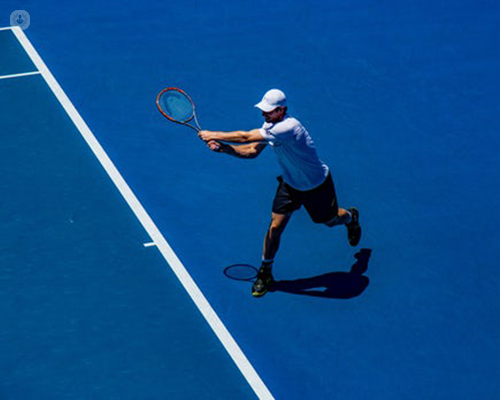Hip problems in young adults: why does my hip hurt?
Autore:For those who enjoy sport, whether casually or competitive, they are not immune to the potential damage that can occur to the body over time, such as pain and stiffness in the joints. Former Wimbledon and US Open champion Andy Murray is a high-profile example, as his recent hip problems threatened to end his career prematurely.
Here, one of our expert orthopaedic surgeons Mr Dean Michael explains everything that you need to know about hip problems in young adults; from the common causes to treatment.

Can hip problems occur in young adults and not just the elderly?
When we think of hip problems, we may picture the cliché image of helping an ageing grandparent into an easy chair. This is sadly inaccurate when it comes to arthritis and hip-related injuries as they are becoming ever more common in the young.
A full hip replacement was the default solution for such problems in the elderly but for the more youthful amongst us, intervention at an earlier stage provides the opportunity for alternative solutions to be considered.
What causes hip problems?
The commonest cause of hips problems are as follows:
- Osteoarthritis – which is essentially pain and stiffness in the joints. A pioneer in this field, Reinholt Gantz asserted that this condition is caused by the shape of the hip, which can result in dysplasia or impingement.
- Dysplasia – which is a ball and socket problem whereby the hip socket is more shallow and doesn’t fully cover the ball portion of the upper thighbone. This condition is normally present from birth and may lead to premature wear of the joint. At worst the hip may be partially or completely dislocated.
- Impingement – this is becoming increasingly recognised and is where there is abnormal contact between the ball and socket. This results in increased friction and potential damage to the joint. Unfortunately, misdiagnosis is quite common as standard X-rays of the affected area often look normal. Patients are subsequently treated for lesser complaints such as muscle strains, which leads to no improvement in the overall condition. As a result, a correct diagnosis can often take up to two years.
How are hip problems diagnosed?
Hip problems due to sporting endeavours are all too common and physiotherapy is often the recommended option to identify the extent of the problem. If there were to be little to no improvement within six weeks, a more in-depth investigation is required.
X-ray is a popular diagnostic tool or alternatively, a specialist MRI scan known as an arthrogram, which involves injecting a dye into the hip joint, can pinpoint cartilage tears, bony abnormalities and impingement.
How are hip injuries treated?
Once the specific cause has been identified, the treatment methodology depends upon factors such as age, pain levels and the amount of structural damage involved.
Cortisone injections, which are a shot of steroids targeted at a specific area, can offer fast-acting relief from the pain caused by inflamed muscles, joints and tendons.
For more severe symptoms, keyhole surgery may be the best way forward. With hip injuries or defects, it repairs or removes damaged tissue from the hip joint. It also eliminates the impingement to stop or slow the progression of arthritis in the affected area.
What happens during rehabilitation and recovery?
The good news is that following surgery, over 80% of patients can throw away their crutches after a few short weeks. Regular physiotherapy is then all that is required for a full recovery.
If arthritis has already taken hold, however, replacing the hip joint is the only option available. Metal on metal hip resurfacing can produce excellent results, which has been evidenced by Mr Murray’s return to form and prominence in the tennis world. For many people, this is not a viable option due to the sensitivity to metal.
Therefore, for arthritis at least, a total hip replacement remains the most popular and effective solution as the key data shows full functionality following surgery in 85% of replacements for over 15 years and that 60% of replacements last over 20 years.
If you’re experiencing persistent pain in your hip, do not hesitate to book an appointment with Mr Michael at the Surrey Orthopaedic Clinic now.


